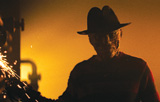
Freddy Krueger’s infamous face has now become even spookier 16 years after the original ‘Nightmare on Elm Street’ was released. Method Studio jumped at the chance to rebuild the face in Samuel Bayer’s ‘Nightmare’, fit to frighten a new generation of viewers.
From Digital Media World Magazine
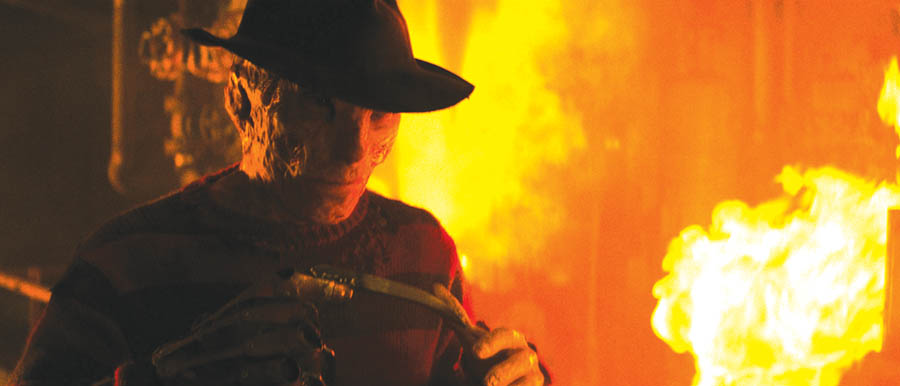 |
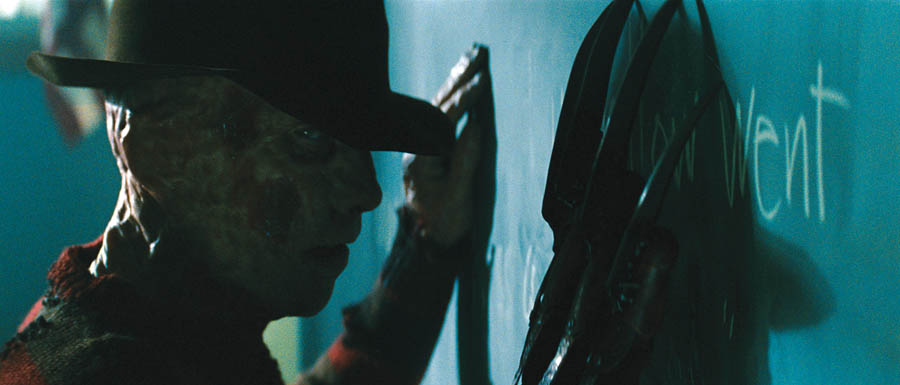 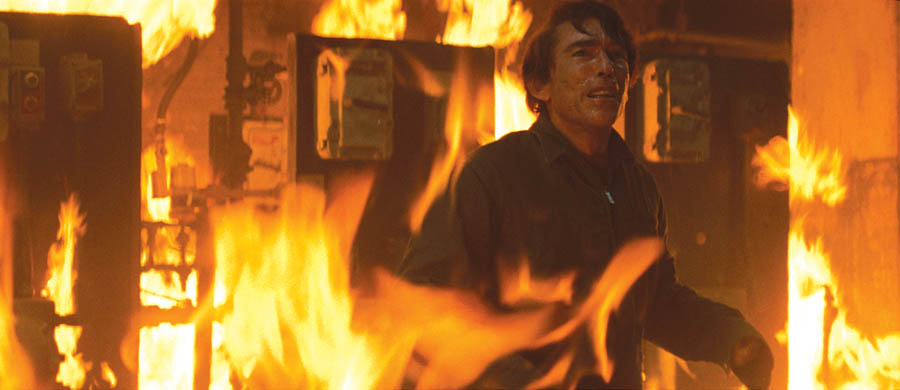 |
|
This film presented Method with an opportunity to tackle a mainstream production with a recognised character, and show the breadth of their skills. Nevertheless, the team were mindful of the movie’s small VFX budget from the start when the initial award was to be a smaller-scale, CG augmentation of the prosthetic make-up created by artist Andrew Clement, only affecting one side of the face. Spider Bite Freddy's ‘new’ face was based on initial production concept art provided by Creative Character Engineering, evolving from client feedback into a final look that opened up larger, deeper holes that were wetter than the original concept. “In order to find the fresh wound look, our artists sampled some pretty disgusting spider bite reference as well as flesh-eating disease images,” said Sean Faden, Visual Effects artist at Method Studios. “Our goal was to prevent audiences from seeing where the makeup ended and CG began.” Sean worked on set throughout the 45 day shoot. “What CG can do and prosthetics cannot, is give the wounds more depth into the face without interfering with the physical actor,” he said. “To blend to specific areas, we had to create many FX on the surface of the skin, and blend back down into the prosthetic.” Sean reckons that in the film, the audience is seeing about half CG, half makeup. Head Geometry
When he started on Nightmare’, Sean had recently finished working as CG supervisor on ‘Terminator: Salvation’ at Asylum, where they worked on Marcus’ face. “It was a similar problem – an actor with CG stuck to his face. We also used an array of magnets, but in Houdini. We tried doing this again for this movie but one of our compositors, Chris Bankoff, wanted to try building one in Nuke, which would mean we could keep the work in 2D, and the compositors could fine-tune the face in their own way. After all, they would be able to see best and keep control of where the troublesome areas were and the blood points would be.” Sculpting Displacement Method’s work on the film was not confined to Fred’s face but extended to developing a dreamlike, or rather a nightmare-like, quality to the footage. This started out with an ambitious plan but grew simpler at the producers’ request. Nuke was used once again to replicate a lens the unit were shooting with off-set, creating what they called a ‘squishy lens’ that put a subtle distortion on the plate and was applied to several shots of Fred toward the end. Motion Control In the final edit, the shots were cut together, back and forth, which the motion controlled moves allowed to be seamless. In the planning stage, they had envisioned elaborate transitions between the two sets. One remaining example is Freddy taking a swipe at the wall in the factory, which shifts to the shop where the same swipe sends bottles and jars cascading from the shelf. Breakthrough In the end, they used a combination of character animation, cloth simulation with Maya’s nCloth, and more work in Houdini for additional cleanups and wrinkling, ‘shrink-wrapping’ the character to emphasise selected details. This time they rendered with V-ray out of Maya. Lighting was done in Houdini and rendered in RenderMan, however. It took them a few months to work out, naming the effect their ‘stretchy wall’, though it only involved a handful of shots. “The 80 or so shots of the face were finished relatively quickly,” Sean said. “We could rely on the actor’s performance to carry the CG and effect of the face whereas effects like the wall, which are the centre of attention, have to be done more carefully.” Digital Snow Method Studios is one of the Ascent Media Group of companies, along with Company 3 where Colourist Stefan Sonnenfeld carried out the DI and graded ‘Nightmare on Elm Street’. Light and Shadow The most significant grading issue had to do with how much of Freddy's face is visible or in shadow at any given moment. Initially, the plan was to conceal more of his face in shadow, but as the Method team showed the filmmakers how realistic their work could be, that aspect of the grade changed somewhat. Stefan could monitor what Method was doing quite closely and had the option to adjust his pre-grade so everyone could follow how the effects would look with a less shadowy grade. General colour casts were established in-camera as far as possible by the cinematographer on-set through the lighting and were then fine-tuned in the DI and grade. |
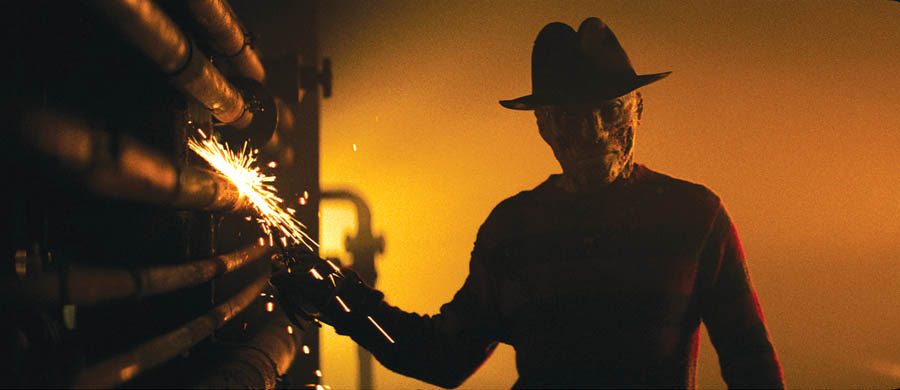 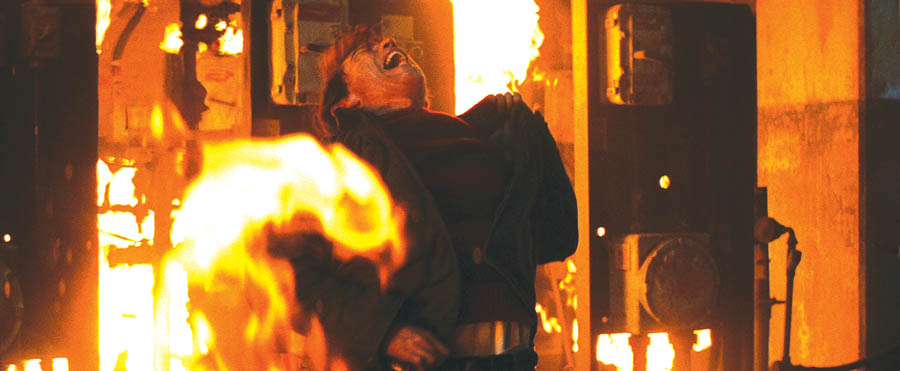 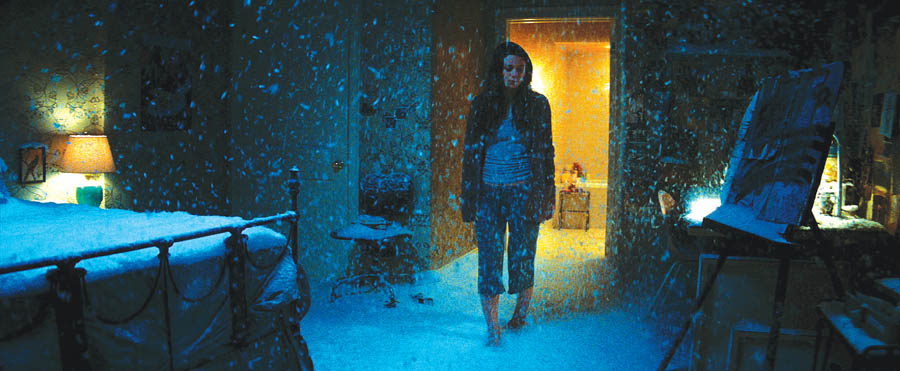 |
|
Method Magic Sean Faden recently joined Method Studios as a VFX Supervisor to help expand their feature film department. Sean came from the Features and Commercials department at Asylum Visual Effects where he was VFX Supervisor both for features, such as ‘The Amityville Horror’ also produced by Michael Bay, and commercials. During his five years at Asylum, Sean also worked as a CG Supervisor on ‘National Treasure’, ‘Phantom of the Opera’ and ‘Pirates of the Caribbean: Dead Man’s Chest’. Most recently, he finished work as Asylum’s CG Supervisor for ‘Terminator: Salvation’, with a team responsible for the Marcus body and face, and the T-600. Earlier on, Sean worked at Digital Domain for seven years, where he CG Supervised the tornado sequence in ‘The Day After Tomorrow’, the avalanche for ‘XXX’ and worked on ‘The Time Machine’, ‘Fight Club’ and ‘Titanic’. Sean started his career in the model shop at Digital Domain, contributing to models on ‘The Fifth Element’ and ‘Titanic’ before moving into digital effects. In April this year, Method’s LA studio made moves to expand its feature film VFX offerings by appointing some new artists. Stephane Ceretti joined from MPC in London, where he recently completed work on ‘Prince of Persia: The Sands of Time’. [See our feature on page 22.] Before MPC, Ceretti was visual effects supervisor at Buf Compagnie in Paris. At the same time, Drew Jones also came from MPC. As executive producer he worked on ‘Percy Jackson & the Olympians: The Lightning Thief’ and ‘Prince of Persia’ as well. Prior to MPC, Jones spent over 11 years as executive producer at Framestore-CFC. |
| Words: Adriene Hurst Images: Courtesy Warner Bros Films |
| Featured in Digital Media World. Subscribe to the print edition of the magazine and receive the full story with all the images delivered to you.Only$77 per year. PDF version only $27 per yearsubscribev |


















